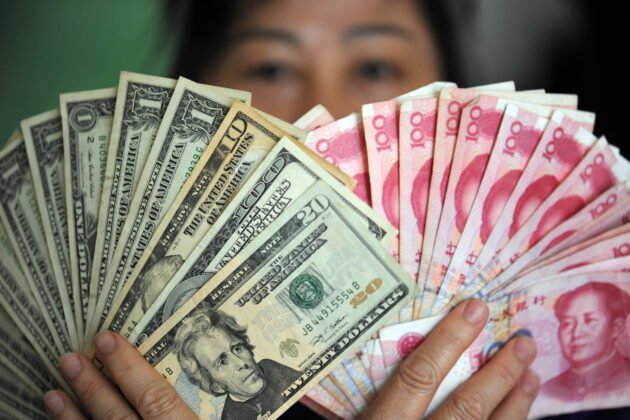China’s third-quarter GDP print at 4.8% was like a tired drumbeat echoing through an empty factory floor — steady enough to avoid panic, but hollow beneath the surface. The data painted a portrait of an economy walking with a limp: industrial output marching ahead while consumption, property, and public finances drag their feet through the mud.
For traders, this is the same two-speed China we’ve seen before — the smokestack side still humming, the consumer side starved of oxygen. Industrial output rose 6.5% year-on-year, but retail sales managed only 3%, and fixed-asset investment slipped 0.5%, its weakest stretch since 2020. Beneath the glossy headline, the cracks run deep: falling home prices, record fiscal deficits, and steel production at its lowest September level since 2017 — all whispering that Beijing’s “soft landing” narrative is built on borrowed breath.
China’s property market remains the silent anchor pulling the broader economy into the deep seaweeds. September home prices slid again — not a collapse, but a persistent leak that saps household wealth and confidence. For millions of Chinese homeowners, paper wealth is the collateral of consumption. When that erodes, so does the will to spend. Each tick lower in property prices widens the gap between China’s policy ambition and consumer reality. It’s the macro equivalent of pumping air into a leaky tire.
Beijing’s budget deficit has ballooned to record highs — up almost 30% this year — as central government spending rises to offset the fiscal anemia of local authorities. Tax revenues have gone nowhere, while spending keeps climbing, an act of quiet desperation that even seasoned China watchers can smell through the policy calm. The state is spending to pretend growth is self-sustaining, but in reality, it’s a fiscal ventilator keeping the patient alive.
The duality of China’s economy — factories pulsing while retail stumbles — is its defining paradox. It’s like watching one side of the economy swim against the current while the other is tied to a stone. Industrial data remain resilient, powered by state orders, green tech, and export demand, but that’s a treadmill economy: it moves, but it doesn’t advance. The private sector, especially consumer-facing industries, is still paralyzed by uncertainty and falling confidence. Every GDP beat hides an underlying rhythm of imbalance.
Enter the Fourth Plenum — Beijing’s grand policy conclave, part economic script, part political theatre. It’s expected to reassert continuity rather than change, doubling down on “new productive forces” — AI, semiconductors, advanced manufacturing — the Party’s attempt to engineer the next industrial revolution without the animal spirits that once powered the last. The irony isn’t lost on the Street: innovation can’t be centrally planned, yet the blueprint insists on doing just that.
Still, traders will watch for any hint of fiscal leniency or consumption stimulus — the so-called “Golden Week hangover” effect. If Beijing nods toward domestic demand with new subsidies or tax breaks, expect a short-term pop in consumer and tech names. The MSCI China Index has already rallied 30% this year on AI optimism, a move more belief-driven than data-backed. It’s a rally running on policy fumes, not organic growth.
Despite the economic frailty, Chinese and Hong Kong stocks stayed firm. The CSI 300 rose nearly 1%, and the Hang Seng tech index climbed almost 3%, led by names like Netease and Nio. Traders, ever opportunistic, chose to dance to the music even if the floorboards are creaking. The bet here is clear: policy will bail out the narrative again — “anti-involution,” “new productivity,” “rebalancing” — whatever phrase Beijing needs to keep confidence afloat.
In a sense, China’s economy feels like a mirage — shimmering with industrial strength and tech ambition, yet fading when you reach for the real driver of sustainable growth: consumers. The leadership wants households to spend more but gives them every reason to hoard. Confidence can’t be mandated, and stimulus can’t replace sentiment.
For markets, this is both tragedy and opportunity. China’s growth pulse may be faint, but it’s still alive — and in a world where liquidity hunts narrative, even the illusion of momentum can be tradeable. The real story isn’t about the data. It’s about how long Beijing can keep the illusion from cracking, and whether the Street still believes the music will play just a little longer.







